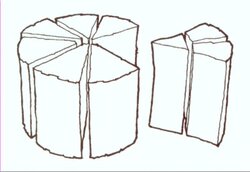When you are using your splitter do you aim to split the round in half with the first split or do you attack the round with a plan on what pieces you want. I used my splitter for my wood for the first time today and was just wondering if splitting in half was always right.
I have split by hand all of my life and can get the feel by looking at the round and it's size and type of wood. But with a splitter the size and type of wood sort of comes out of the equation.
I have split by hand all of my life and can get the feel by looking at the round and it's size and type of wood. But with a splitter the size and type of wood sort of comes out of the equation.


